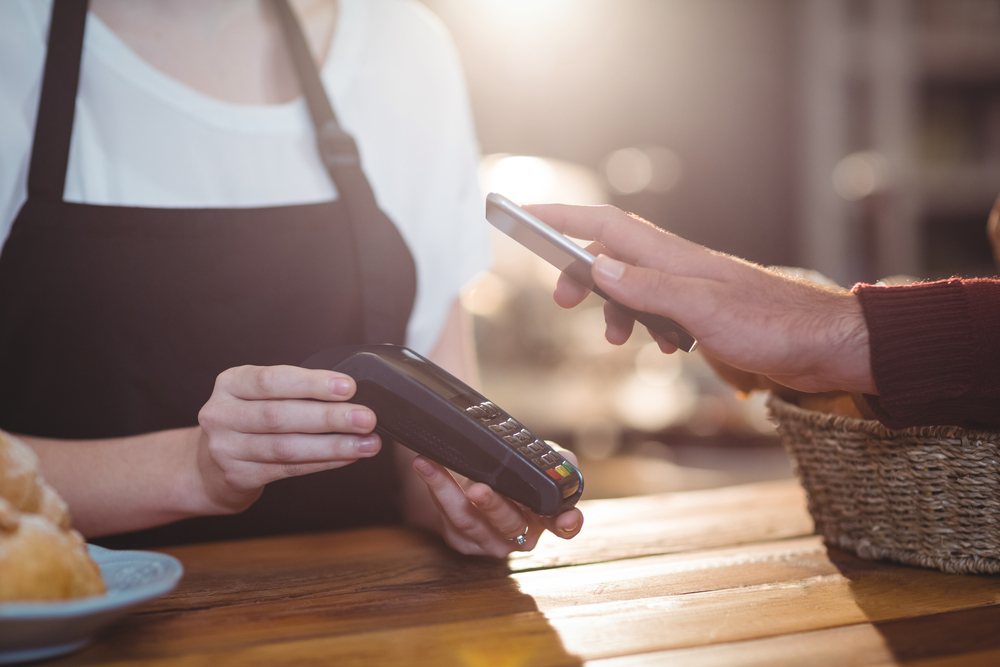Does contactless payment outpace the physical payment card?

Contactless payment is gaining traction in major cities. As we become more digitalized, our payment habits evolve. Studies from organizations like Dansk Erhverv indicate a notable increase in the use of Apple Pay in Danish urban areas. This comes as no surprise to the domestic fintech industry. Former CEO of the Danish fintech company Shopbox, Andreas B. Iversen, praises Apple for its seamless use of NFC technology, which he believes sets Apple apart from its competitors in the market.
We prefer contactless payments in our daily lives!
We shop, we pay, and we transfer – and it all needs to be seamless and easy! So, what could be a better solution than a digital wallet?
A digital wallet is a solution that enables purchases via mobile devices, with physical payment cards registered in the app. This eliminates the need to carry physical cards when shopping or making online purchases. Particularly with Apple Pay, card details, PIN codes, and other sensitive information are not stored on the phone, and each transaction requires security authentication (e.g., Face or Touch ID). This makes contactless payments both secure and incredibly convenient. Even in the unfortunate event of losing your phone, there’s no need to worry. A digital wallet cannot be used without security authentication, and it is possible to remotely lock your phone via a computer.
There’s no doubt that digital wallets are increasingly replacing physical payment cards among Danish consumers, especially among young people in urban areas. Many young individuals prefer paying with a digital wallet, whether for online purchases or when shopping in physical stores. But the question remains: why?
“Contactless payment via mobile is increasingly becoming a focal point for interaction in the physical space”
Among the most popular wallets is Apple Pay, which has seen significant growth in usage for in-store payments, nearly quintupling to 186 million transactions in 2021 within just two years. Apple Pay is available on iPhones but can also be used via Apple Watch and is typically utilized for online purchases on MacBooks and iPads.
In the Nordics, we are at the forefront of contactless payment, and according to Andreas B. Iversen, there are good reasons for this. One of them is that we in the Nordics are quick to adopt and implement new technologies in our daily lives, especially when they make everyday tasks easier and more convenient. Whatever new technology we can use to simplify our lives, we are very open to it. Additionally, Denmark has excellent checkout systems and terminals that widely support NFC technologies, and Shopbox is one of them:
“We want to ensure that stores can accept payments and assist them in connecting the physical and the digital. At Shopbox, we deliver the software and guidance that help physical businesses and retailers seamlessly tie their physical and digital sales together.”
Furthermore, Andreas B. Iversen believes that the growing interest in Apple Pay is due to Denmark being an 'Apple nation'. However, regardless of whether one is an Apple or Android user, Andreas thinks that Danish consumers are ready to replace plastic cards with their mobile phones:
“The mobile phone is increasingly becoming the focal point for interaction in the physical space, whether it's through contactless payment, NFC, QR codes, or something else.”
A future with cryptocurrency?
Back in February 2022, Apple Pay introduced the new 'Tap To Pay' feature, which is reportedly a potential gateway for cryptocurrency payments in the future. Behind the scenes in the fintech industry, there are ongoing speculations about how and when this might be implemented. According to Andreas B. Iversen, cryptocurrency in Denmark is currently primarily an investment tool, which several banks, including Lunar, offer the opportunity to trade. He adds:
“As soon as it becomes possible to pay with cryptocurrency in stores, we’ll be at the forefront, ready to offer it to our customers!”